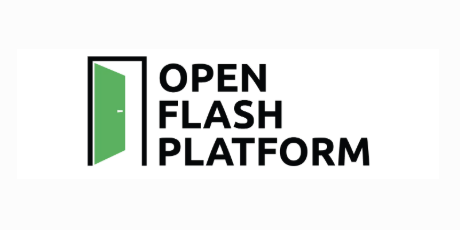The comfort zone of anonymization is breaking. For years, enterprises have limited their privacy goals to surface-level techniques of anonymization. Techniques such as Mask PII, which obfuscate identifiers and others, are often assumed to ensure compliance without thorough execution. And that’s the red flag in today’s AI-influenced, agile data environments.
Given global regulations getting stricter, multi-cloud environments can’t lean on schema-level anonymization anymore. Not only does it lose business context, but it also destroys relationships and data utility.
Therefore, CIOs and CDOs have woken up to the reality that anonymization can’t be treated as a secondary afterthought. They require context-aware, entity-level data anonymization, something that was long overdue.
The limits of traditional data anonymization
In the good old, simpler times, data grew at a controlled pace, could be stored in structured relational databases, and transferred through linear pipelines while working only on PII fields for privacy concerns. Thus, such legacy systems masked data at the column level; for example, names, emails, IDs, banking account numbers etc; while skipping the rest of the data.
Now, the problem is, our system landscapes are more interconnected, data moves through hundreds of touchpoints, for example, transactional systems, SaaS applications, APIs, message queues, repositories and several other unstructured containers.
By the end of 2025, the global data size is expected to grow to 181 zettabytes, with 80% of this data being unstructured or semi-structured, making traditional, column-aligned anonymization obsolete.
Anonymizing a few columns in such a manner puts the entire landscape at risk. The traditional tools discussed above can’t preserve complicated linkages between accounts, customers, transactions and activities; functionally exposing the so-called anonymized data in advanced use cases.
Why Context-Aware Privacy Is Now Critical
Today’s system landscapes are no longer linear. The data flows through on-premise systems, cloud systems, public and private clouds, partner networks, external APIs and others.
Anonymizing data in this dynamic world isn’t simply a matter of replacing PII fields. The challenge is preserving the semantic relationships between entities across multiple sources, formats, and use cases. Without preserving referential integrity, masked data cannot support AI pipelines, performance testing, or longitudinal analytics. Worse, inconsistencies introduced during poorly managed anonymization can lead to regulatory failures when audit trails break or data lineage is lost.
The average cost of a data breach reached an all-time high of $4.88 million in 2024, marking a 10% increase over the previous year, underscoring the significant financial stakes associated with inadequate data governance and privacy controls.
Not anonymization but anonymization without the business context is the real issue. Given the vast landscape, data professionals want to and must control how data behaves across business processes, analytics models, and operational systems, all while maintaining integrity, auditability, and fairness.
The difference is that a context-aware approach views customer data not as a row in a table, but as a fully connected entity with transactions, locations, and communications spread across multiple systems. So, identifiers, without preserving these connections, may pass through compliance tests but fail in actionable environments such as system testing, AI training or risk analysis.
Enterprises need an anonymization technique that protects the identifiers without affecting the business logic and relationships. This can be achieved using an entity-level approach that not only keeps the data legally safe but also operationally useful.
The Rise of Entity-Based Anonymization
In the past few years, the new generation of tools has filled the gaps by expanding the scope of anonymization beyond compliance readiness only. It’s now a part of data governance and operational readiness. K2view, for example, manages data at the entity level; this means every business partner’s data, such as name, IDs, transaction details etc, is stored in an exclusive, logically isolated entity; unlike disconnected fields in multiple tables. The tool enables preserving referential integrity across structured and unstructured data sets, including PDFs, XMLs, legacy systems, messaging queues and others.
As a leading data management ecosystem, it supports 200+ data anonymization techniques, including no-code customization and integration of CI/CD pipelines. With role-based access control, compliance reporting, and auditability baked into its engine, anonymization becomes part of enterprise data operations, not an afterthought.
Likewise, BigID classifies and manages sensitive data, regardless of the system’s complexity. It does so via ML-powered data discovery capabilities, enabling organizations to locate and tag sensitive attributes across structured, semi-structured, and unstructured environments.
Its strength lies in identity-aware data mapping and privacy-aware governance, helping enterprises streamline compliance while preparing for AI-driven workflows. BigID also integrates with broader data catalogs and security frameworks, making it a key enabler for centralized data privacy strategy.
Privitar has well-structured privacy policies and risk scoring throughout the lifecycle. Such policy centralization enables enterprises to define, implement and monitor anonymization logic across various domains. Particularly environments wherein data minimization, purpose limitation and risk quantification are central to privacy strategy, Privitar is highly effective. And that makes it a natural fit for highly regulated industries.
Informatica, the data veteran, is enhancing its privacy management for large enterprises managing complex data estates. Known for its platform-wide integration, Informatica embeds privacy controls into the data governance ecosystem, covering metadata management, cataloging and data quality. The centralised architecture lets enterprises scale privacy programs through rule-based anonymization, within end-to-end pipelines.
Each of these players reflects a shift: anonymization is moving beyond privacy alone, toward operational, governed, and business-aligned data management.
Governance-Grade Privacy as a Board-Level Responsibility
CIOs, CDOs, and CISOs can no longer view anonymization as a tactical feature buried in IT workflows. As AI models increasingly rely on enterprise data, anonymization failures may introduce legal, ethical, or reputational risks well beyond compliance violations. Biased datasets, incomplete anonymization across unstructured records, or improper handling of cross-border data flows can trigger board-level exposure.
The post Why Data Privacy Without Context Will No Longer Work in 2026 appeared first on Datafloq.

